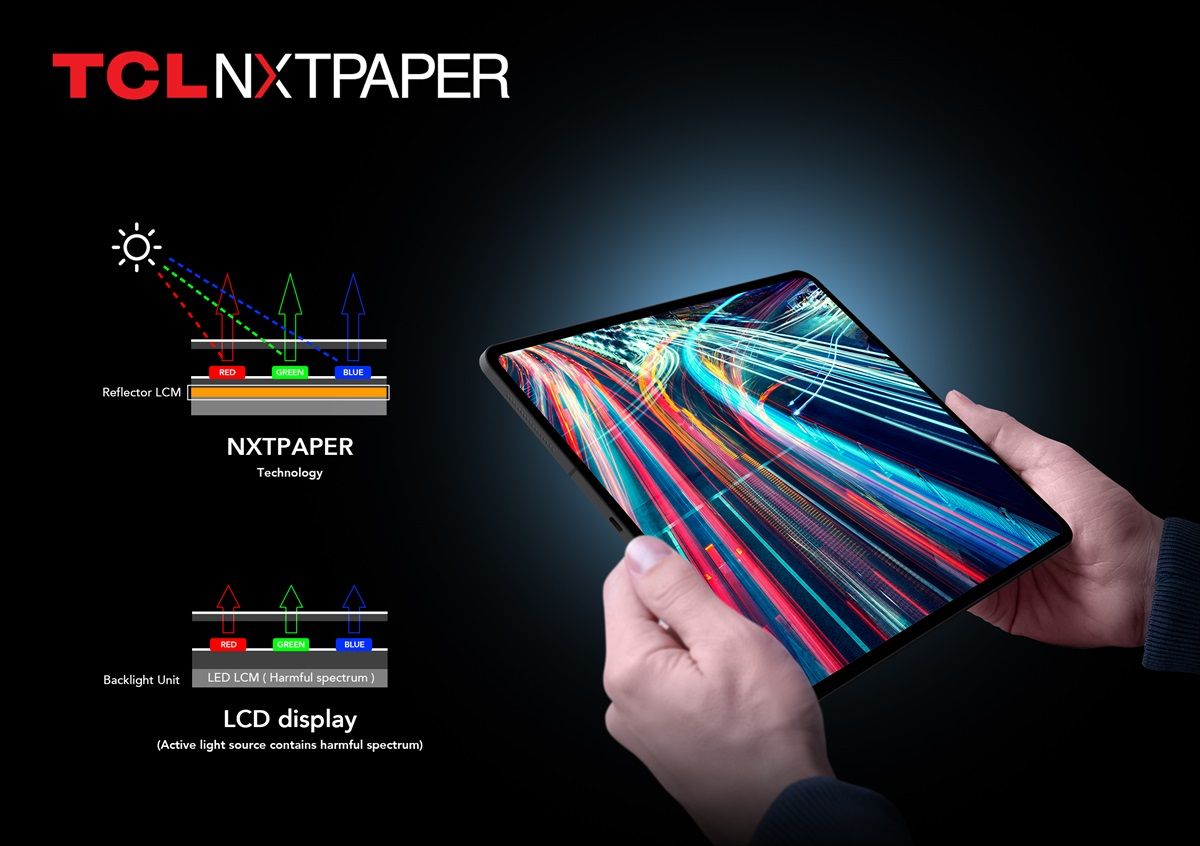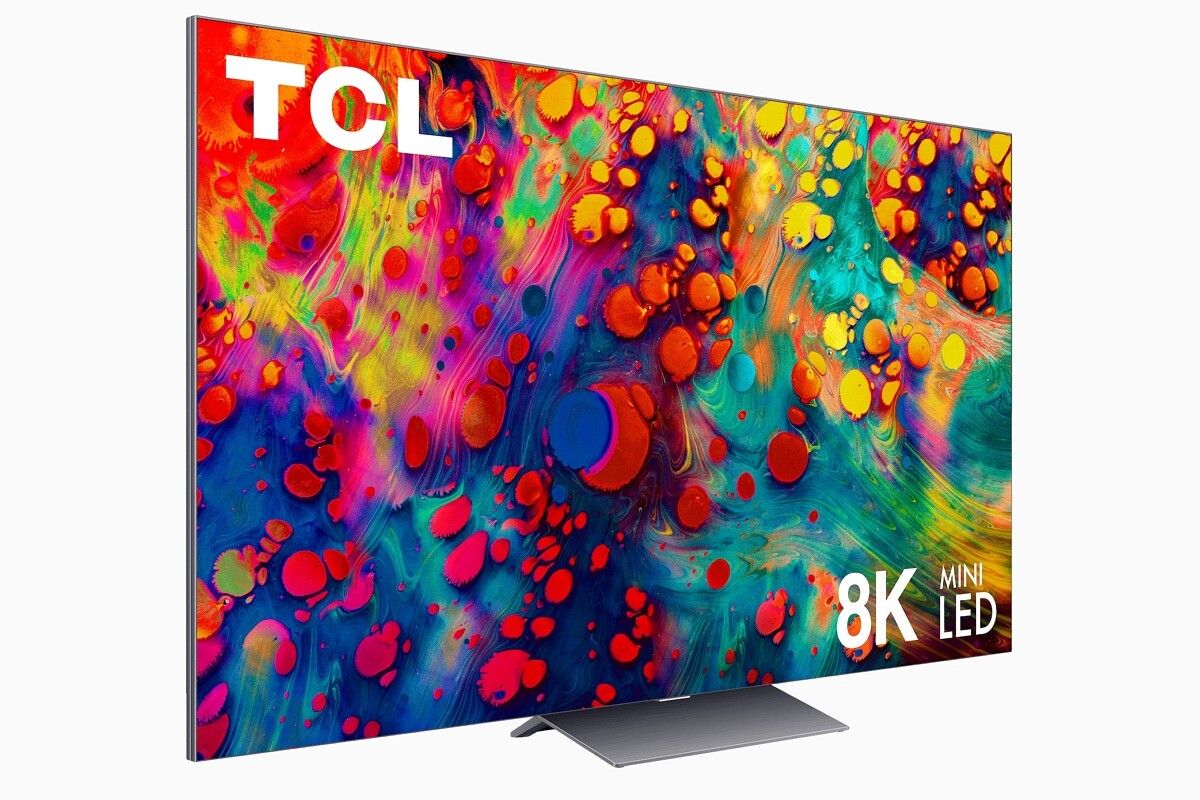
The dust has settled on another showcase in Vegas, except this year’s Consumer Electronics Show took place virtually thanks to the ongoing COVID-19 pandemic. There were a lot of announcements, both directly related to the show or — in the case of Samsung with the Galaxy S21 series announcement — timed for the few days that CES took place. Our team has spent many hours looking through the announcements from CES, and while you can see all of our CES coverage here, we wanted to highlight a few products that stand out for many reasons!
From laptops, phones, and hardware to software, components, and things for the home, here are our picks for the Best of CES 2021.
Best of CES 2021 – Our Top Picks
Here’s a summary of our top picks from CES 2021:
- ROG Flow 13
- TCL NXTPAPER
- Lenovo LAVIE MINI
- LG & TCL Rollable Displays
- TCL 6 Series 8K TVs
- Sony Bravia Core
- Samsung JetBot 90 AI+ Robot Vacuum
- LG Ultra Fine OLED Pro
- Lenovo ThinkPad X1 Titanium Yoga 5G
- ASUS Fanless Chromebox
- Razer Project Hazel
And here’s a bit about why we picked each product:
ROG Flow 13

ASUS ROG Flow X13
The ASUS ROG Flow X13 is a 13.3-inch ultra-portable gaming laptop available with either a 120Hz FHD panel or a high-res 4K display protected by Corning Gorilla Glass. Both display options offer a 16:10 aspect ratio, support Adaptive-Sync and are Pantone Validated. It’s powered by an AMD Ryzen 9 5980HS mobile processor and NVIDIA GeForce GTX 1650 graphics.
The standout announcement alongside the ROG Flow X13 is XG Mobile, a relatively compact mobile external GPU enclosure that can accommodate up to a GeForce RTX 3080 graphics card. Considering the size of the card and the size of the enclosure, this is bound to be a boon for anyone who needs graphics on the go.
TCL NXTPAPER

The new TCL NXTPAPER is an innovative product in a market that doesn’t often see meaningful innovation: tablets. Essentially an e-ink tablet but without actually using an e-ink display, the TCL NXTPAPER provides 25% higher contrast than most e-ink tablets and is also 65% more power-efficient compared to standard LCD screens.
Why does this matter? Crucially, there’s no harmful blue light and rather than using a backlit display, it uses a highly reflective IPS screen to reuse natural light. TCL is clearly hoping the net result is that you won’t put it down.
Lenovo LAVIE MINI

NEC LAVIE MINI with gaming controller
Taking the term pocket-sized PC quite literally, the LAVIE MINI is a mini convertible concept PC that could easily be a small PC or a large portable gaming console. It features an 8-inch WUXGA (1920 x 1200) touch panel display, up to an 11th Gen Core-i7 mobile processor with Intel Iris Xe graphics, 256GB of storage, and 16GB of LPDDR4 memory.
Weighing 579 grams, the LAVIE MINI is definitely portable, and it comes with a backlit keyboard. There’s also an IR camera for Windows Hello, a 26WHr battery, and Wi-Fi 6. What makes it interesting is the optional Gaming Controller, which transforms the mini laptop into a Nintendo Switch-esque portable gaming console. Lenovo says it can handle high-quality PC Games, and just like the Switch, you can use the optional HDMI Dock to play games on a bigger display.
LG & TCL Rollable Displays
The biggest innovations in mobile are definitely coming in the next-gen experience, including foldable devices, rollable devices, and some of the weirdest concepts we’ve seen in a long time.
Announced at CES 2021, LG’s Rollable phone is incredibly sleek in its transition from smartphone to tablet. LG was one of the first to dabble in TVs with rollable displays, and the company’s first foray into a rollable phone is set to debut as a real product later this year. We can’t wait!

Last year became the year where folding, rolling, and otherwise transforming devices started gaining momentum. This year should be when many of those concepts become reality, and TCL should be bringing several of its next-gen concepts to market this year.
One of these products may be a rolling phone based upon the TCL Concept with Rollable Display. This concept phone was shown off at CES 2021, and it uses internal motors to extend a 6.75″ AMOLED display to a 7.8″ display size at the press of a button. The phone is said to be just 9mm thick — about the same thickness as the Galaxy S21 Ultra — which means it is still going to be slim enough to be usable on a daily basis.
We’re excited to see both of these concepts come to market later this year!
TCL 6 Series 8K TVs

Do you know what’s also exciting? TCL’s TV range, specifically the 6-series. Usually available at the sub-$1,000 price tag, the 6 series is the affordable premium range in TCL’s lineup and is more mainstream than the premium 8-series. TCL is widely regarded as making the best affordable TVs you can buy under a thousand dollars, and its affordable TVs have driven its rise to become the second-largest TV manufacturer in the US.
Last year, TCL brought mini-LED technology to a sub-$600 TV, making it the first at that price point to use the tech. This year, TCL is bringing 8K to the range which may make the 8K versions slightly more expensive but will result in a larger base for content houses to build 8K content for.
Sony Bravia Core
Streaming platforms may not seem like exciting news, but Sony’s new Bravia Core platform could prove to be a boon for anyone with a Sony TV who’s interested in a cinema-like viewing experience. The service will use Sony’s “Pure Stream” technology to allow users of the latest Sony Bravia XR TVs to stream at up to 80Mbps, which Sony says will provide near-lossless quality that is comparable to watching a 4K Blu-ray movie.
Sony says that the service — which is preinstalled on all new Bravia XR 4K and 8K models including the Master Series Z9K 8K LED and 4k models like the X90J — will let you stream a selection of titles from Sony Pictures whenever, and however much, you want. They also claim there’ll be “the largest IMAX enhanced movie collection” with remastered IMAX picture and DTS sound. It remains to be seen just how many titles are on the service, but the service could definitely help you get the most out of your new TV.
Samsung JetBot 90 AI+ Robot Vacuum

The Samsung JetBot 90 AI+ Robot Vacuum might have a mouthful of a name, but it features some impressive tech designed to handle all of your daily cleaning needs. It uses sensors and AI-enhanced object recognition to move around your home while avoiding the myriad of obstacles that can usually come in the way. A LIDAR sensor detects the distance to objects and tracks location, resulting in a precise clean of every spot.
You might like: These are the best earbuds launched at CES 2021
There’s a 3D sensor that detects small objects on the floor — like a charger or a chew toy — and avoids fragile items so it won’t accidentally chew up those wires for your expensive sound system, while it’ll also empty into its own bag once it finishes cleaning. Like most robot vacuums, it can also map your home for the most efficient cleaning route and can be controlled remotely using the mobile app. The camera on the front can also be used as a remote camera to keep an eye on your home when you’re not there, allowing it to double up as a roving home security machine.
LG Ultra Fine OLED Pro
LG makes some of the most popular monitors on the market, especially for Mac users, and the company’s latest announcement at CES 2021 promises to also be a fan favorite. The company’s Ultra Fine range gains a truly Pro monitor that is also LG’s first foray into using OLED technology on a monitor.
Measuring 31.5-inches, the monitor supports 3840×2160 pixels (4K resolution), a USB-C port, three USB-A ports, two DisplayPorts, and an HDMI port. There is also OLED pixel-dimming HDR and a 1,000,000:1 contrast ratio. There’s no word on the price so it will likely be quite expensive, but it could easily be one of the best monitors launching this year.
Lenovo ThinkPad X1 Titanium Yoga 5G

ThinkPad X1 Titanium Yoga
Another product name that is definitely a mouthful is the ThinkPad X1 Titanium Yoga 5G, a stunningly thin new Intel-powered laptop from Lenovo that is made from titanium, magnesium, and carbon. Weighing just 2.5 lbs, it’s ultra-light yet features up to an 11th Gen Core i7 processor, 16GB of RAM, and up to 1TB of storage. At just 11.5mm thick, it’s one of the thinnest convertibles on the market yet can handle everything you can do with a Windows computer in 2021.
The 13.5-inch display features a 3:2 aspect ratio, 2256 x 1504 resolution, and Dolby Vision with a peak brightness of 450 nits. It comes with Touch support and an included Lenovo Precision Pen, an IR camera, fingerprint reader, two Thunderbolt 4 ports, and a 44.5Wh battery. There’s also Wi-Fi 6 and support for 5G thanks to the optional Qualcomm Snapdragon X55 5G modem, making this one of a growing number of 5G laptops on the market. If you want something that’s powerful yet portable, this definitely fits the bill, although it will start at $1,899 when it goes on sale later this year.
ASUS Fanless Chromebox

Who said innovation had to be for consumers only? Announced at CES 2021, ASUS’ new Fanless Chromebox proves that commercial tech can also be interesting, although the company’s Chromebooks are stealing all the attention. An update to the Chrome OS desktop, the Fanless Chromebox is a portable fanless tiny computer in a rugged form factor designed to support commercial and industrial applications. Packed with 10th Gen Intel processors and updated connectivity options, it uses passive cooling to withstand the heat from its components without a noisy fan.
The diminutive size (it measures 1.3 x 8.1 x 5.8 inches) and a lockable VESA mount make this the perfect device to be tucked away out of sight, either behind a monitor or under the desk. It comes with three CPU choices — a Core i3, i7, or Celeron 5205 — and supports up to 8GB of RAM and up to 128GB of storage. As it’s running Chrome OS, it comes with support for the Google Play Store and Android apps. It has a range of connectivity options including Wi-Fi 6, a USB 3.2 Gen 1 Type-C port, a pair of HDMI ports, and a microSD card slot.
Razer Project Hazel

After the year we’ve all had, someone was bound to make it: an N95 mask that makes use of technology in a cool way. Razer definitely has the right idea here with Project Hazel: a concept mask that’s designed to be protective while still allowing you to show off some of your personality. It features a glossy outer shell made of waterproof and scratch-resistant recycled plastic. I’m always smiling, and it’s been noticeable how much of this non-verbal communication is lost with a mask on; the transparent outer shell of Project Hazel is designed to allow for lip-reading, seeing facial cues when talking to people, and presumably so facial accessories and makeup are visible.
There’s no date on exactly when Project Hazel will be available — and what the final product will actually be — but Razer says it is working closely with medical experts to ensure it matches the standard Razer is aiming for. Like an old gas mask, the two circular zones on either side of your mouth use disc-type ventilators to filter the air that’s breathed in and the CO2 that’s being exhaled. Razer expects the masks will be certified to filter 95% of particles including being effective in the fight against COVID-19.
Of course, it’s Razer and we’d expect the company to bring more traditional tech to the forefront as well. Microphones and amplifiers embedded in the ventilators will help project your voice, and the company is working with THX to find the right balance in terms of volume. In traditional Razer fashion, there are also Chroma RGB LEDs built into the two rings, and at night, a series of LEDs automatically shine on your mouth so people can still see your mouth.
That’s it for our top picks of CES 2021! You can see all of our more detailed coverage in our CES 2021 archives! What did you think of our picks for Best of CES 2021: Is there anything else you would have added, and if so, what and why? Let us know in the comments below and see you next year!
The post Best of CES 2021: the tech that caught our attention! appeared first on xda-developers.
from xda-developers https://ift.tt/2LL74Cs
via IFTTT








